Welcome back to GWS's series on charity website design.
In our first post, we introduced the four basic functions of a charity website:
- Communicating with the public to encourage individual and new supporters (see last week),
- Communicating with corporate partners, and large-scale grant funders to achieve long term partnerships
- Conveying your expertise to professionals in your charity's field, and
- Evidencing your commitment to engaging directly with your charity's target beneficiaries.
Today, we give some ideas about how to achieve the second objective of charity website design: attracting and impressing visitors to your site who may offer large-scale funding or long-term business partnerships.
To achieve the second objective, the design tips we mentioned which address the first objective are, of course, valuable.
Funders want to see a) proof that you have a clear idea of what your funds can achieve and b) how you’re actively attracting individual donations.
For Objective Two specifically, think about what professionalism looks like; provide evidence both of your planning process, and what outcomes result from your work.
It is worthwhile devoting time to a detailed example of a project (perhaps a case study showcasing a typical project cycle).
This Kenyan schools project is, throughout the site, very clearly documenting its work and goals using plain, clear English; striking design, and beautiful images.
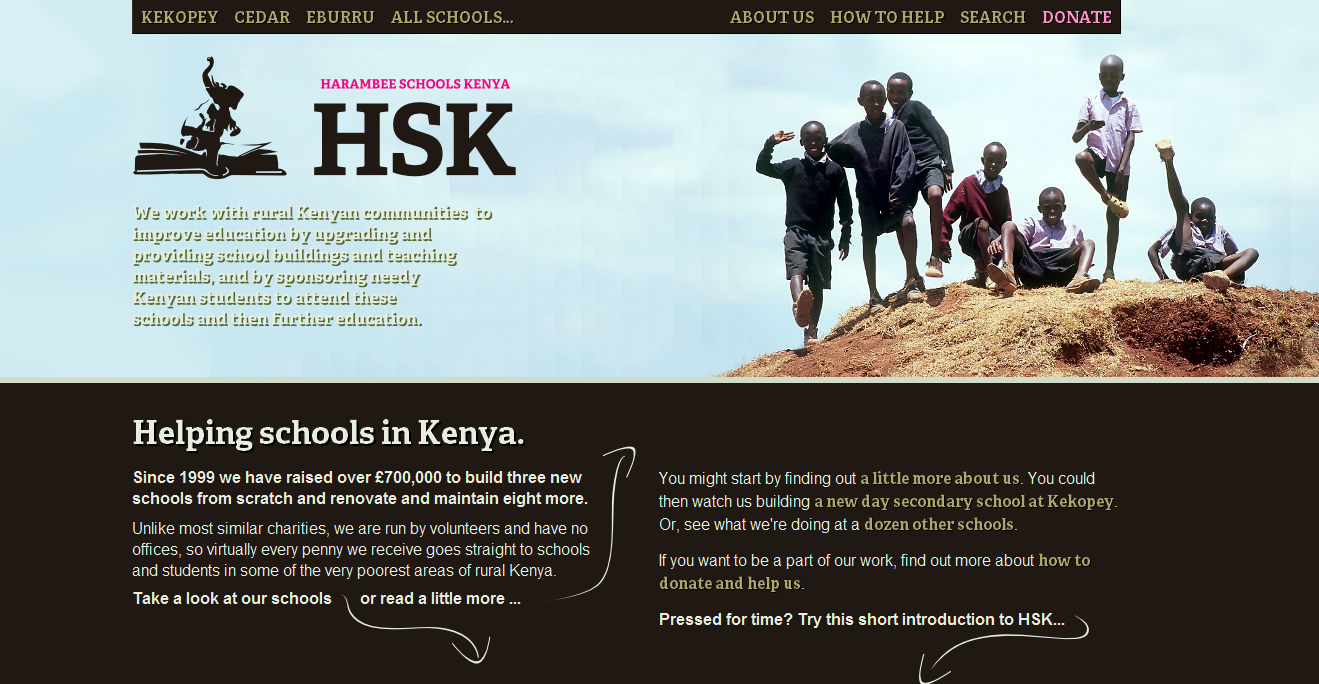
Up-to-date staff biographies / photographs show off your ‘human capital’.
They also get potential partners visualising the funding partnership with people (not a nameless organisation) who appear professional and approachable.
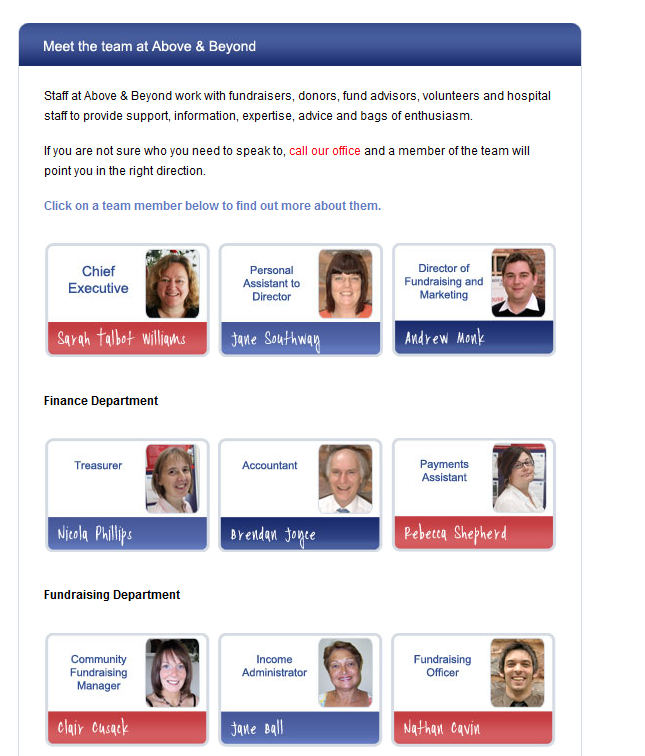
Bristol charity Above and Beyond’s ‘About Us’ section is a great example, with links to each staff member's bio.
Also valuable is research or figures which proves your projects have had successful outcomes.
We featured Blood:WaterMission's striking site last week, they've used infographics to demonstrate their impact:
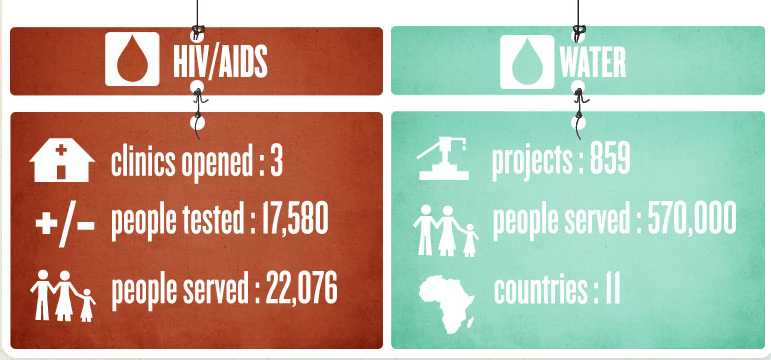
Another powerful tool is testimonials from those who have observed, or benefited from your work, as Scope provides.
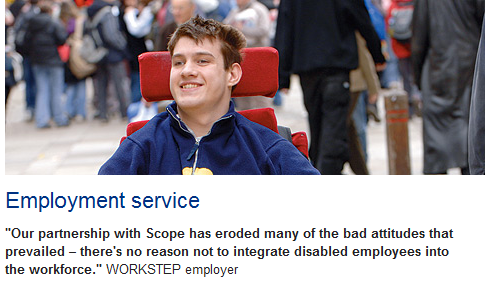
And of course annual reports which prove your transparency - and solvency - should be clearly signposted.
The NSPCC have designed a page specifically to communicate the results of their annual report.
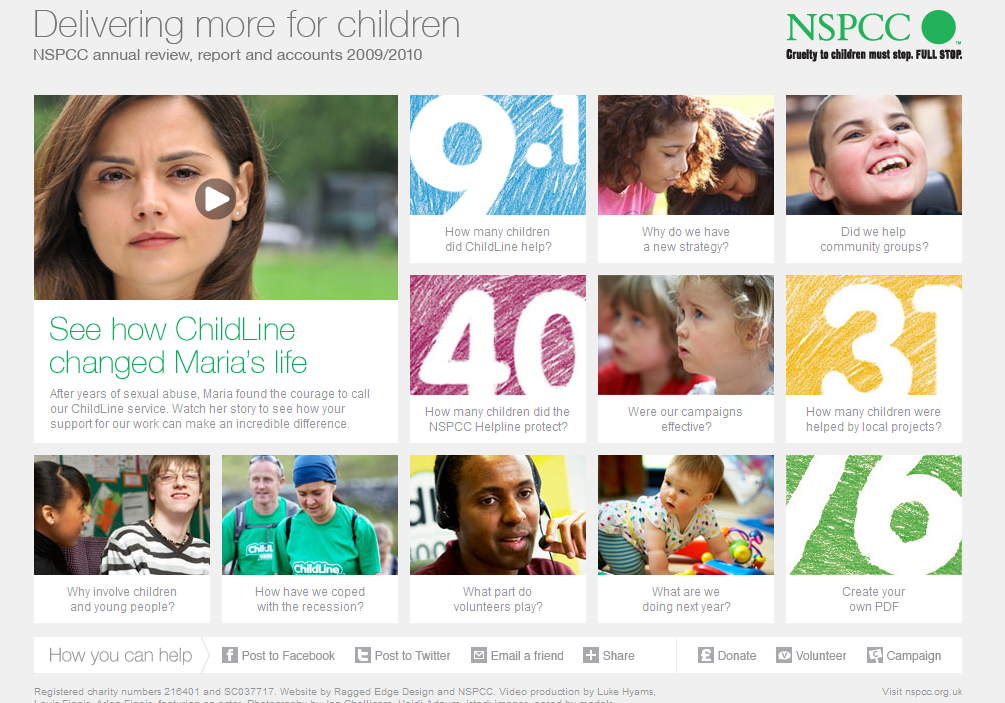
In terms of taking the relationship forward, commitment to partners can be shown by dividing the site into sections aimed directly at them.
CAFOD is one example of the many charities which has developed a resources section especially for working with partners.
And here's a snippet of Action for Children's attractive yet informative page on outcomes, an essential for any service provision charity.
Again, positive images reinforce the core goals of both charities while communicating the purpose effectively.
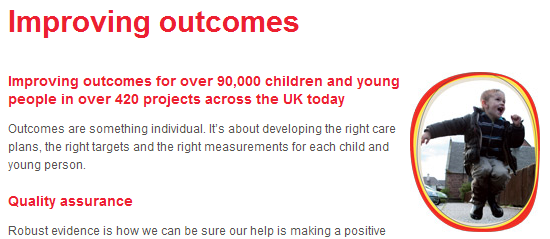
We hope you're enjoying the series (here's the beginning) - we're certainly enjoying researching all these fantastically creative and intelligent uses of website communication and design.
Next time, we'll talk about how to achieve the third objective of charity website design; communicating effectively with co-workers and professionals in your field, with more great examples.
Let us know what you think of the sites we've featured so far! Comment, Tweet, or Facebook us here. We'd love to get your feedback.
Head on over to part 4 of our charity website design series, Forging Relationships With Those Who Share Your Goals.
